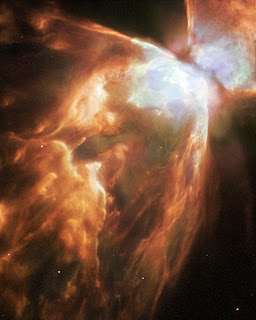Location: KNUST (Kwame Nkrumah University of Science and Technology)
Audience: 100 students, 4 lecturers, 2 Profs
Timings: 5 ish – 7 ish
Programme: Introducing astronomy, video about our galaxy and how it was formed, protecting the planet we have (incl. experiment), careers in science and Stellarium.
Skies: Cloudy
We drove to Ghana’s second largest city Kumasi on Tuesday for an evening programme at Kumasi University. The Provost of Science, Prof. Aboagye welcomed us to campus and gave us a tour of the lecture hall where the talk was to take place.
Bearing in mind it was the middle of exams and we’d arranged the programme in two days we were a bit unsure as to the turnout we’d get. We needn’t have worried as the Physics society and the Provost had plastered campus with posters heralding the arrival of a UK astronomy and astrophysics team *ahem*. When we started at 5 ish there were about 40 students and more filed in until there were about 100 students in the lecture hall.
The atmosphere was very relaxed until we started asking big questions like, “How many of you think there is life on other planets?” at which point it started to liven up and then by the time we got to creating a cloud in a bottle (experiment you can do at home detailed below!) the room was buzzing.
The first telescope (kindly donated by the Grimstone Foundation) was presented to the physics society students and they said they now have the impetus to set up an Astronomy Society open to anyone on campus. We tried to take the telescopes for a spin but alas it was exceedingly cloudy and had to settle for training the students in how to use them.
It was tough to set up but one student reminded us that in Ghana it is one step at a time and we’ve contributed to our initial aim of inspiring more Ghanaians to take an interest in astronomy and training the students so they can set up a club of their own.
Next stop is Cape Coast University and in the meantime we’ve been arranging visits to schools and community groups as well as preparing for a visit to Ghana from the President of the UK Institute of Physics, Dame Professor Jocelyn Bell Burnell. There is hopefully going to be some collaboration between the IoP’s work here in creating science centres and the planetarium but that’s still to be decided.
And finally we’ve embarked on a mission to get Star beer to sponsor the planetarium – watch this space!
------------------------------------------------------------------------
Cloud in a bottle – create our atmosphere in your own home!
Ingredients: 1 plastic bottle, matches, strong hands
Fill a plastic bottle (500ml or smaller works quite well) with 1 – 2 cm of water. Light a match and drop it straight into the bottle and seal the top. Now squeeze the bottle four or five times until the air in the bottle turns opaque. You’ve made your own cloud!
The physics behind it: Smoke particles from the match act in the same way as dust particles in the atmosphere. As you squeeze the bottle, the volume of the bottle decreases, the pressure increases and the temperature inside the bottle increases. As the water molecules turn to vapour they stick to the smoke particles in the bottle and form clouds.



